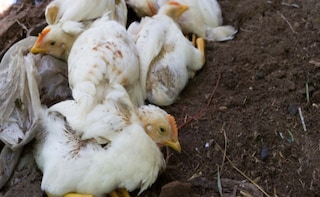From Hong Kong to China and Japan to the Unites States, the Avian influenza - commonly known as bird flu - seems to be flying across continents affecting poultry and posing a severe threat to human wellness. In India, there have been cases of local poultry being affected by bird flu in the past three months. China has been battling with the virus since a couple of years now with the first few deaths reported in March 2013. Since then, the Chinese government has been undertaking culling operations to curb the virus from spreading any further. Controlling the disease in animals is what governments all across the globe are working towards and therefore mass culling is being frequently conducted in various parts of the world including countries like India, Japan and China.
Advertisement
Advertisement
Advertisement
Advertisement
- Wash your hands with soap and warm water for at least 20 seconds before and after handling raw poultry and eggs.
- Clean cutting boards and other utensils with soap and hot water to keep raw poultry from contaminating other foods.
- Use a food thermometer to make sure you cook poultry to a temperature of at least 165 degrees Fahrenheit Consumers may wish to cook poultry to a higher temperature for personal preference. Cook eggs until whites and yolks are firm.
For the latest food news, health tips and recipes, like us on Facebook or follow us on Twitter and YouTube.
Advertisement
